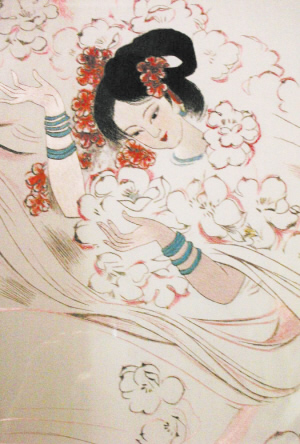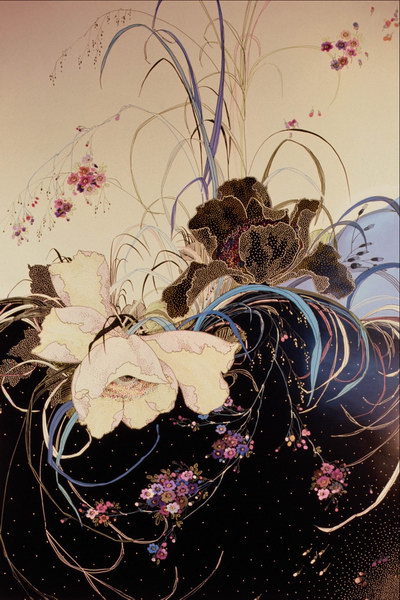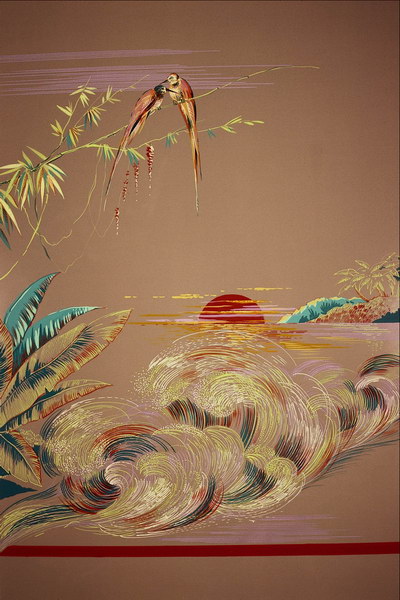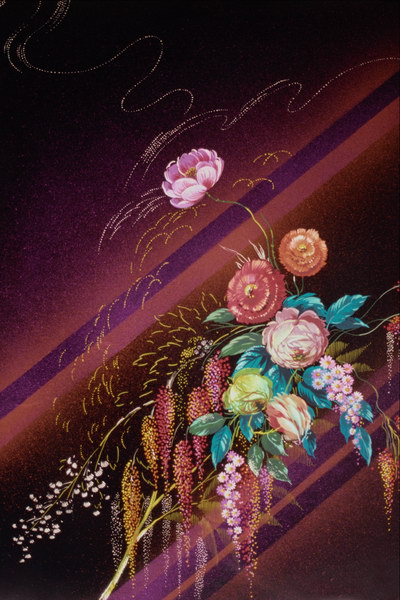Embroidery is a very long established art form in China. It was never classified as a solely female activity and men and women have both been involved in embroidery. The items embroidered are quite diverse and include robes, theatrical costumes, purses, shoes, spectacle cases, banners, alter cloths and many other pieces. Some of the pieces were so finely stitched that the pieces took 5-6 people several years to complete. Embroidery was also used as a means of decorating silk clothing and for silk flags and banners as a means of denoting rank or station. The finest pieces of work were very expensive. Gradually, embroidery developed, as a pastime for wealthy ladies and many members of the court were renowned for their intricate work.

According to the Chinese there are two main divisions of embroidery, “chih wen” and “tuan chen”. “Chih wen” uses the long and short stitch, while “tuan chen” involves the seed stitch used in Beijing which is also known as the French knot. The stitches most commonly used by the Chinese include 1) satin stitch ? which is further classified into long and short 2) Beijing stitch or French knot 3) Stem stitch; 4) Couching; 5) Chain stitch; and 6) Split stitch. All of these stitches are known in the west. Many westerners find Chinese embroidery a little over done. The Chinese satin stitch when done to perfection is exquisite in its fine detail. The use of gold thread for the French knot, for which the Chinese have a special gift, is characteristic of their work. Sometimes even such light material as gauze and paper were embroidered to demonstrate the fineness of the work.

It is difficult to be precise as to when embroidery first was practiced in China but based on archeological excavations of tombs it at least dates back to the early Han dynasty which based itself near Lake Baikal in the early second century B.C. Many Tang embroideries continue to be preserved both in China and in Japan. One of the most famous representations of the embroiders’ artistry is the piece that came from the Thousand Buddhas at Tun Huang and that dates from the tenth Century.

There are also many fine pieces of embroidery from the Sung dynasty. We know from historical records that the Sung Emperor Hui Tsung (1101-1126) established an embroidery bureau called the “Wen Hsiu Yuan”. It also is well known that many of the finest pieces were copied in the Ming and Ching period and it is therefore difficult to definitely attribute many of these pieces.
Chinese Literature records the names of many famous embroidery artists. Among these are Kuan Fu-jen, the wife of the painter Chao Meng-fu and the ladies of the Ku family in Shanghai such as Ku Shou-ch’ien who worked their artistry in Ming times. The painters Tung ch’i-ch’ang and Wen Cheng-ming and more recently Sh’en Chou who died in 1910 are all considered great embroiders.
Embroidery is still practiced in many sections of China. Suzhou is well known for the quality of its work. Additionally other areas have a reputation for embroidery but few can match the precision, art and charm of the work produced in China prior to the Modern period.








发表评论 评论 (0 个评论)